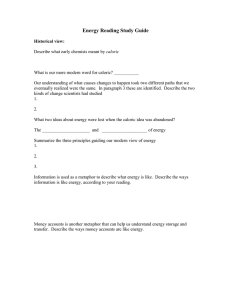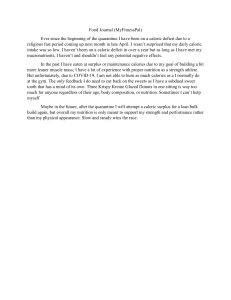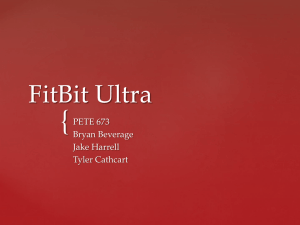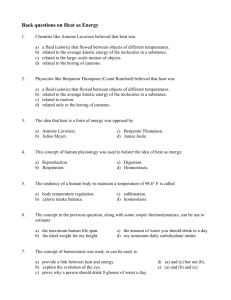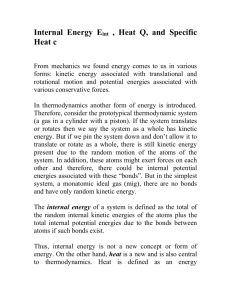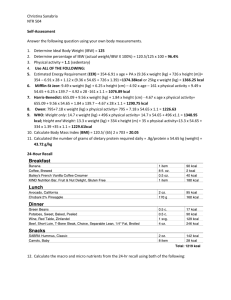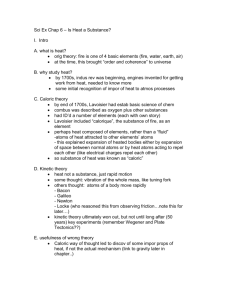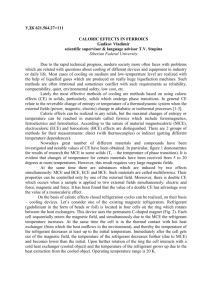Brief History Intro
advertisement
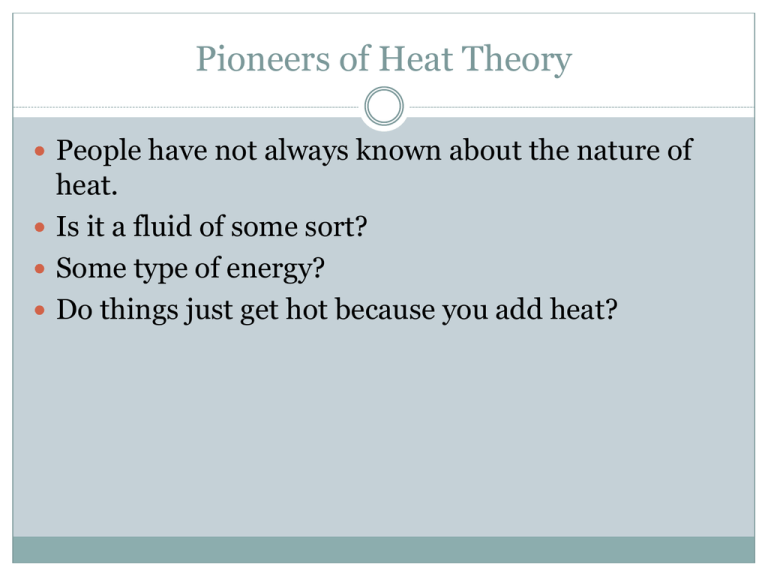
Pioneers of Heat Theory People have not always known about the nature of heat. Is it a fluid of some sort? Some type of energy? Do things just get hot because you add heat? Different substances have different heat capacities. I regard heat as a fluid called caloric. When an object heats up, it gains caloric, and when it cools, it loses caloric. Logical conclusion in my opinion! Caloric has no mass or volume… While drilling out cannons in Munich, I noticed that the cannon became hot as long as the friction of boring continued. I concluded that heat was not a substance, but a form of vibratory motion. Hence my views are in contradiction to the caloric theory. And, I might add, much more logical... I agree with Count Rumford! Heat is a form of motion. Heat is not a substance. I was able to prove this experimentally by rubbing two ice cubes together at below zero, and observing that they melted… contradicting the caloric theory. Cool, eh?! I was able to quantify Heat!! I did this by measuring changes in temperature produced by the friction of a paddlewheel attached to a falling weight. This work led to the idea that 1 calorie = 4.18 Joules. Science teachers often tell you to memorize this, and they round it off to 4.2 J… I’m Maxwell! And I’m Boltzmann ! Alright! Go ahead – you tell them... I… (ahem)… WE formulated the Maxwell-Boltzmann Kinetic Molecular Theory…known as the KMT… Pretty impressive, eh? This theory states that heat is a form of energy, and… Temperature is a measure of the kinetic energy of the individual particles - atoms, molecules, etc. Heat Versus Temperature Temperature is the amount of average kinetic energy within an object. Heat is a form of energy. The amount of heat an object holds depends on several factors: temperature change (∆T), mass, and the specific heat capacity (C) of the object. Q (quantity of heat in joules) = m C ∆T
